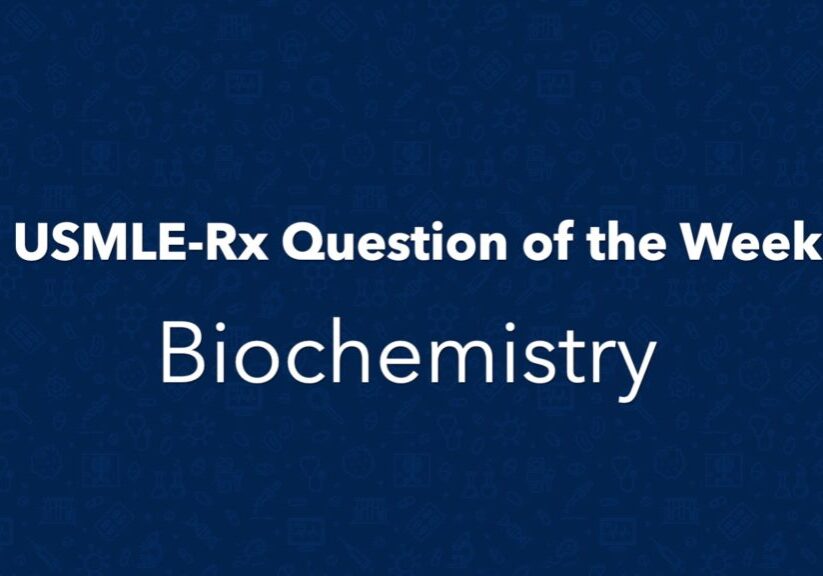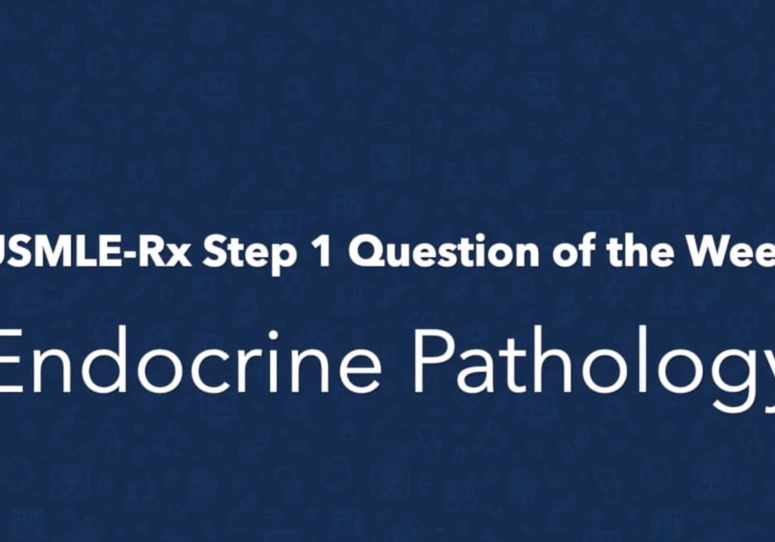Check out today’s Step 1 Qmax Question Challenge.
Know the answer? Post it below! Don’t forget to check back for an update with the correct answer and explanation (we’ll post it in the comments section below).
 A 46-year-old man presents with a temperature of 38.6°C (101.5°F). He was fine 2 weeks ago, but started feeling poorly a few days ago after a dental examination. Physical examination reveals tender raised lesions on the beds of his fingers and toes, and painless, erythematous lesions on his palms and soles, like those in the images. On further questioning, the physician discovers that the man has a history of rheumatic fever as a child. Blood cultures are drawn.
A 46-year-old man presents with a temperature of 38.6°C (101.5°F). He was fine 2 weeks ago, but started feeling poorly a few days ago after a dental examination. Physical examination reveals tender raised lesions on the beds of his fingers and toes, and painless, erythematous lesions on his palms and soles, like those in the images. On further questioning, the physician discovers that the man has a history of rheumatic fever as a child. Blood cultures are drawn.
The most likely causative organism will have which characteristics?
A. Gram-positive cocci, catalase-negative, β-hemolytic, bacitracin-resistant
B. Gram-positive cocci, catalase-negative, β-hemolytic, bacitracin-sensitive
C. Gram-positive cocci, catalase-negative, α-hemolytic, optochin-resistant
D. Gram-positive cocci, catalase-positive
E. Gram-positive, weakly acid-fast rod
———————–
Want to know the ‘bottom line?’ Purchase a USMLE-Rx Subscription and get many more features, more questions, and passages from First Aid, including images, references, and other facts relevant to this question.
This practice question is an actual question from the USMLE-Rx Step 1 test bank. For more USMLE Step 1 prep, subscribe to our Flash Facts and Step 1 Express video series. Score the best deal on all three products with a Step 1 Triple Play Bundle.




C. one of the Viridans streptococci.
c
The answer is C.
A
c
manifestations are due to emboli from infective endocarditis involving heart valves. Rheumatic heart disease caused the predisposing damaged heart valves
C
Why doesn’t this question have an official answer? I’m between 2 answers B and C. C makes sense in the situation but does it usually present with a lesion? I only B presents with a lesion
C
Staphy viridans
B..Group A beta hemolytic S.pyogenes Bacitracin sensitive. History of Rheumatic fever is associated with GAS. Abs to heart tissue 2 weeks post Strep pharyngitis. Joint inflammation, carditis, erythema Magnatum, etc
B Group A strep
The correct answer is C. The patient is likely suffering from subacute bacterial endocarditis, likely precipitated by his recent dental examination. He has classic symptoms of Osler’s nodes (tender raised lesions on finger or toe pads–left-hand image) and Janeway’s lesions (non-tender erythematous lesions on the palms or soles, right-hand image). Viridans streptococci are a common cause of this form of endocarditis, which generally occurs in the setting of dental procedures on patients with diseased heart valves. Viridans streptococci are gram-positive, catalase-negative, ?-hemolytic cocci.
A is not correct. Streptococcus agalactiae, or Group B streptococci, are gram-positive, ?-hemolytic cocci. They are bacitracin resistant. They cause pneumonia, meningitis, and sepsis, mainly in babies, and thus are unlikely to be responsible for this patient’s condition.
B is not correct. Streptococcus pyogenes is a gram-positive, ?-hemolytic group A streptococcus. These organisms are bacitracin sensitive. This organism is most commonly associated with illnesses such as pharyngitis, cellulitis, impetigo, scarlet fever, toxic shock syndrome, rheumatic fever, and acute glomerulonephritis—but not with endocarditis.
D is not correct. Staphylococcus aureus is a common cause of acute endocarditis. These organisms often are the culprit in the setting of previously healthy intravenous drug users. They are gram-positive, catalase-positive cocci.
E is not correct. Nocardia asteroides is a gram-positive, weakly acid-fast rod. It is known to cause pulmonary infection in immunocompromised individuals. It is not known to cause bacterial endocarditis.
adaptable
Landon
Calvin